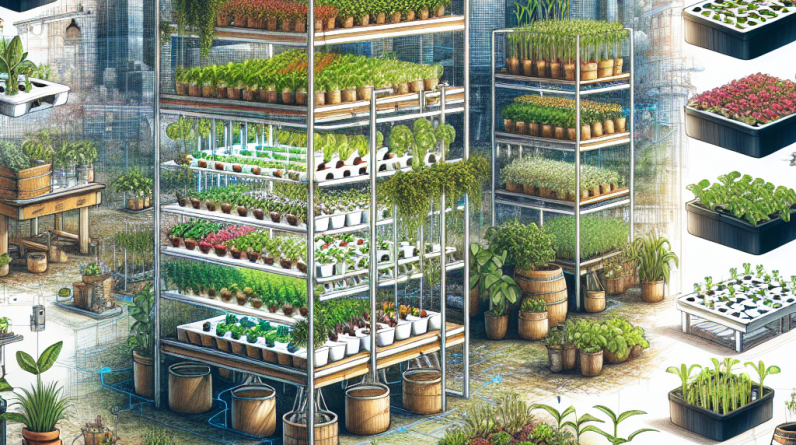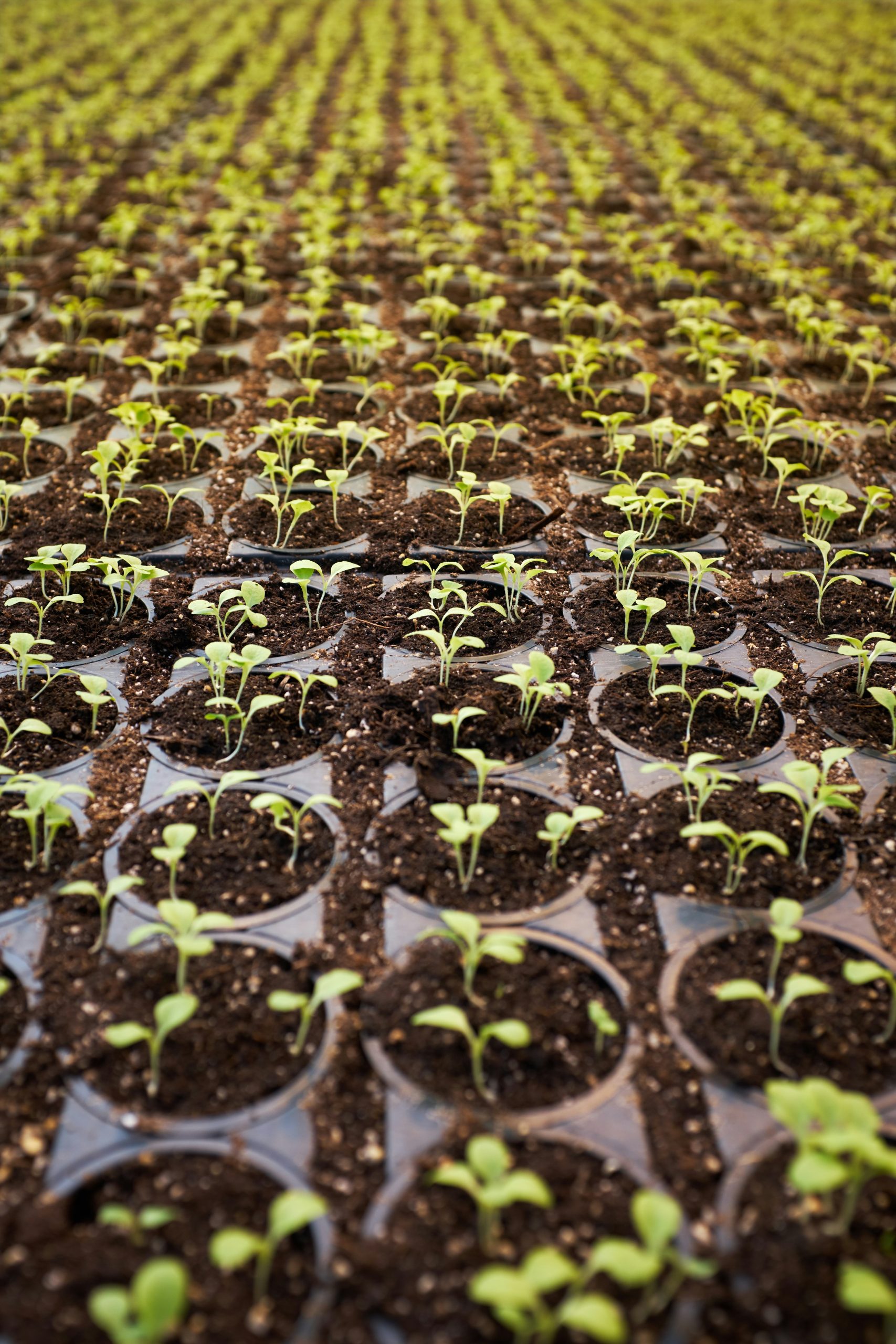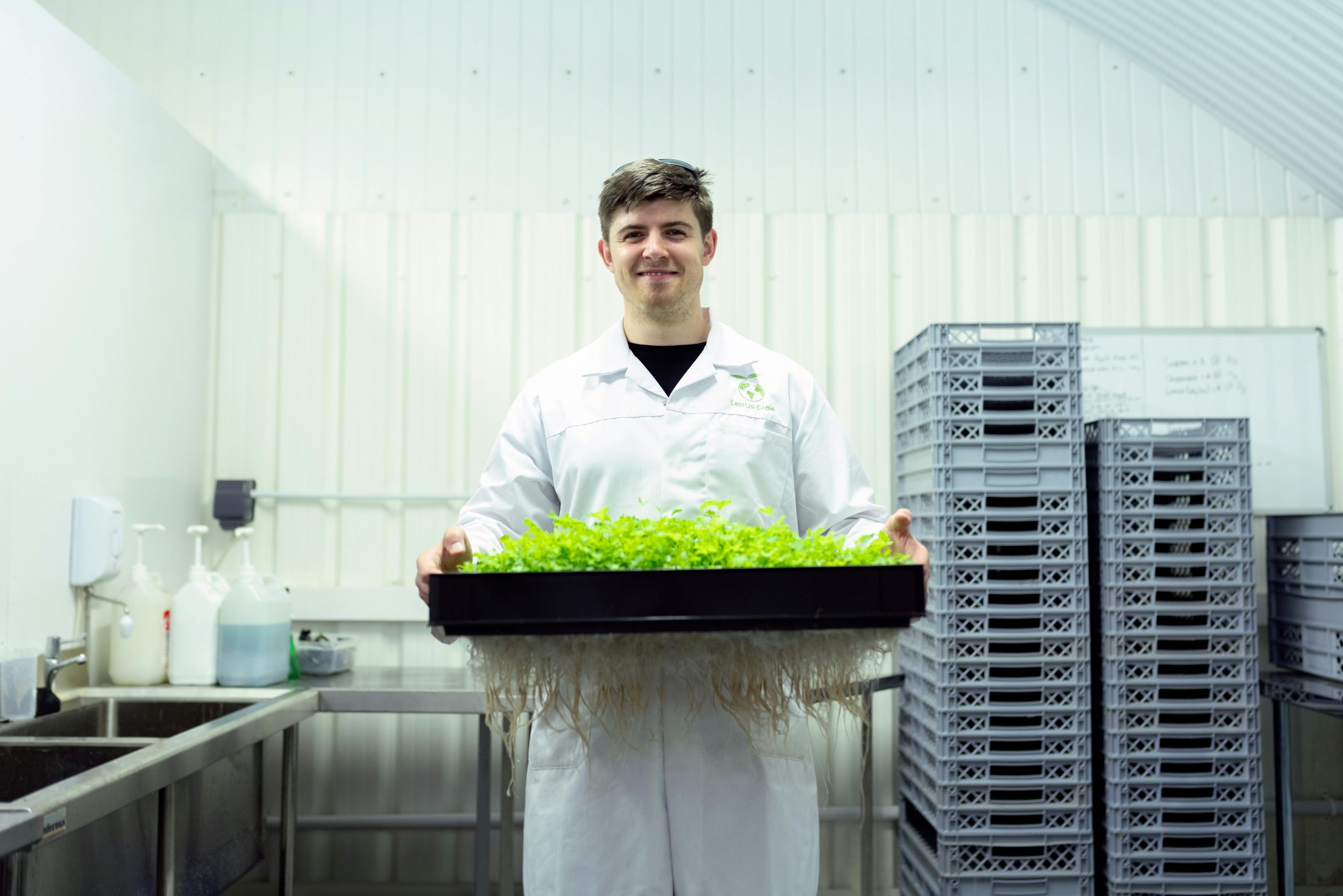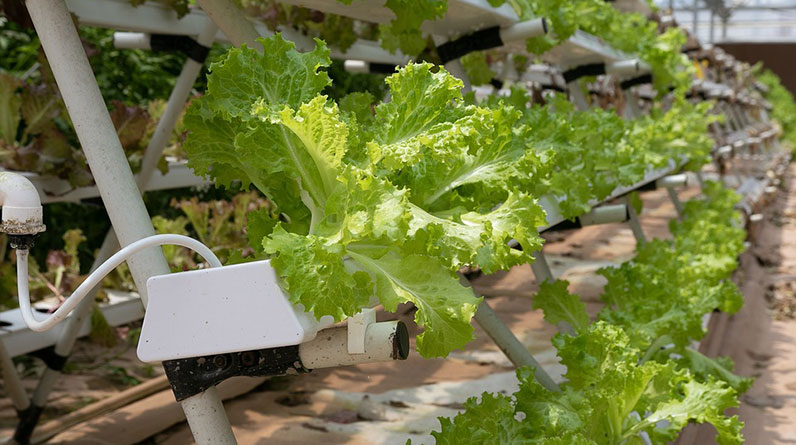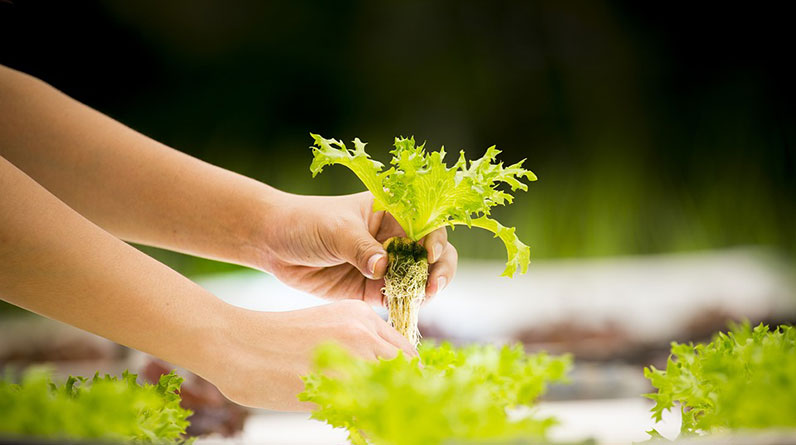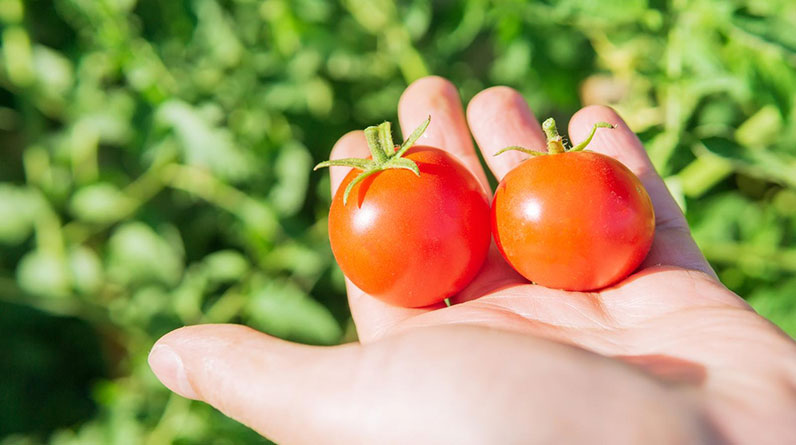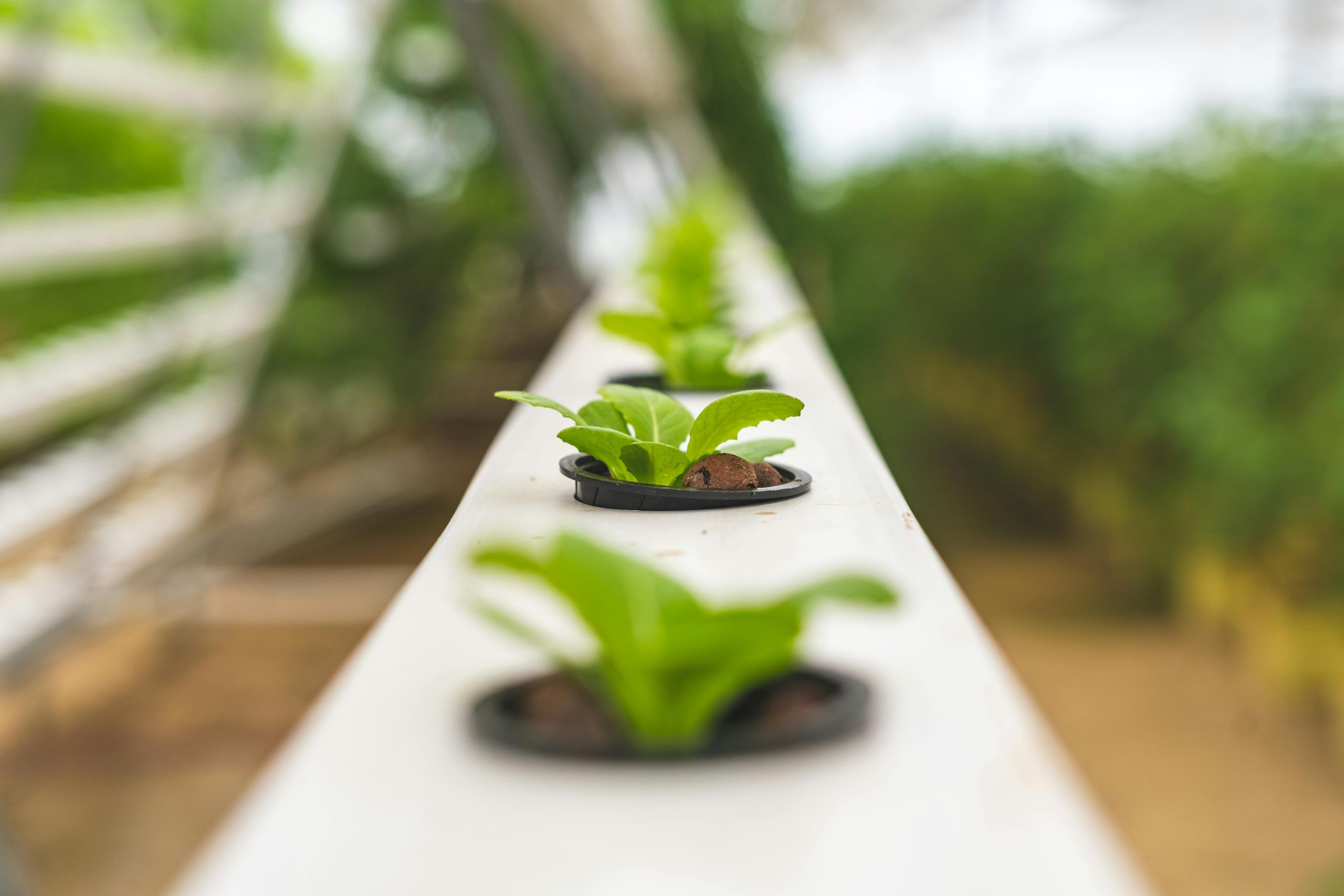
- 1. Lettuce: A Fresh Start for Beginners
- 2. Basil: Aromatic and Easy to Grow
- 3. Spinach: Nutritious and Resilient
- 4. Bell Peppers: Colorful and Rewarding
- 5. Mint: Hardy and Fragrant
- 6. Cucumber: Fast-Growing and Refreshing
- 7. Cherry Tomatoes: Small but Powerful
- 8. Lemon Basil: Unique Flavor for Culinary Use
- 9. Kale: Nutrient Powerhouse
- 10. Chili Peppers: Spicy and Simple
1. Lettuce: A Fresh Start for Beginners
Why Choose Lettuce for Hydroponic Gardening
Lettuce is one of the most popular hydroponic plants for beginners because it grows quickly and requires minimal maintenance. Its fast growth cycle, typically 30-40 days, makes it an excellent choice for those new to hydroponics in 2025. Plus, itâs versatileâperfect for salads, sandwiches, and wraps.
Moreover, lettuce adapts well to different hydroponic systems such as NFT (Nutrient Film Technique) or deep water culture. Its shallow root system makes it ideal for small setups, so beginners can start with a compact system and scale up over time.
Real-world example: many urban dwellers have successfully cultivated fresh lettuce in small indoor setups, proving that even limited space can yield fresh greens quickly.
Tips for Growing Lettuce Successfully
Maintain a temperature between 60-70°F (15-21°C) for optimal growth. Keep the pH level of the nutrient solution around 6.0-6.5 to help lettuce absorb nutrients efficiently.
Ensure consistent lightingâabout 12-16 hours of grow lights per dayâand keep the water oxygenated with air stones to prevent root rot. Fresh, high-quality seed stock is vital for healthy plants.
In 2025, new LED grow lights with customizable spectra have made it even easier for beginners to achieve lush greens indoors. Invest in a simple monitoring system to keep track of pH, temperature, and nutrient levels.
2. Basil: Aromatic and Easy to Grow
Why Basil Is Perfect for Hydroponic Beginners
Basil is an aromatic herb that thrives in hydroponic systems. Its rapid growth, often within 3-4 weeks, makes it an exciting choice for beginners who want quick results. Basil also prefers warm, consistent conditions that are easy to maintain indoors or outdoors in 2025.
Since basil is a culinary favorite, growing it hydroponically ensures a fresh supply right at home. Plus, it’s less prone to pests compared to soil-grown herbs, simplifying care routines for newcomers.
Recent studies in 2025 have shown that basil grown hydroponically can have higher essential oil content, making it more flavorful and aromatic than traditional soil-grown basil.
Growing Tips for Basil in Hydroponics
Maintain a temperature of around 70-80°F (21-27°C) and a humidity level of 50-60%. Implement a 16-hour light schedule using energy-efficient LED grow lights.
Use a nutrient solution rich in nitrogen to promote lush foliage. Regularly prune basil to encourage bushier growth and prevent flowering, which can affect flavor.
For best results, start with high-quality basil seeds and monitor nutrient levels weekly. A simple hydroponic system with adjustable lights makes it straightforward for beginners to succeed with basil.
3. Spinach: Nutritious and Resilient
The Benefits of Growing Spinach Hydroponically
Spinach is an excellent choice for beginners because it thrives in hydroponic systems and offers high nutritional value. In 2025, more people are turning to hydroponics to boost their leafy greens intake without pesticides or soil-borne diseases.
Its tolerance to different nutrient levels makes spinach adaptable to various hydroponic setups, including ebb and flow or nutrient film techniques. Spinach can be harvested multiple times if properly pruned, providing ongoing yields.
Studies in 2025 indicate that spinach grown hydroponically can contain higher vitamin C and iron levels, making it a superfood for health-conscious beginners.
Growing Tips and Maintenance
Keep the water temperature between 60-70°F (15-21°C) to prevent bolting and ensure rapid, healthy growth. Maintain a pH level of 6.0-6.5 and provide adequate light for 12-14 hours daily.
Supplement with calcium and iron-rich nutrients for optimal leaf development. Regularly check water levels and oxygenation, especially in small indoor systems.
Start with fresh spinach seeds and place them in a well-lit environment â this combination helps you get the most out of your hydroponic spinach crop in 2025.
4. Bell Peppers: Colorful and Rewarding
Why Bell Peppers Make a Great Beginner Hydroponic Crop
Bell peppers are popular among hydroponic enthusiasts because they produce colorful fruit and have a relatively manageable growth cycle for beginners. In 2025, new varieties with shorter maturation periods (around 70-90 days) are widely available, making them accessible for novice growers.
Growing peppers hydroponically reduces pest issues and allows for precise control over nutrients, resulting in vibrant, high-quality peppers. They also thrive in vertical setups, perfect for small spaces or indoor gardens.
Many urban farms in 2025 have successfully integrated hydroponic peppers for local markets, showcasing their commercial potential for beginners aiming to start small but scale fast.
Tips for Growing Bell Peppers
Maintain temperatures around 70-85°F (21-29°C) during the day and slightly cooler at night. Use a nutrient formulation tailored for fruiting plants with adequate potassium and phosphorus.
Provide 14-16 hours of light daily and ensure good pollination, especially in indoor setups. Regularly prune to encourage air circulation and guide plant growth.
Monitor nutrient levels weekly with a pH of 5.5-6.5 for optimal fruit production, making peppers an exciting and rewarding hydroponic plant for beginners in 2025.
5. Mint: Hardy and Fragrant
Growing Mint Hydroponically for Beginners
Mint is one of the easiest hydroponic plants for beginners. Its vigorous growth habit means it quickly fills its space, providing a fragrant addition to your herb collection. In 2025, hydroponic mint has become highly popular due to its minimal care requirements and rapid multiplication.
It thrives in most hydroponic systems, especially shallow ones like Kratky or simple wick setups. Itâs perfect for small indoor gardens, even in limited light conditions, making it a versatile herb for novices.
Farmers and hobbyists alike are finding that hydroponic mint requires less pest control, and its continuous harvest makes it excellent for culinary and medicinal uses in 2025.
Growth and Maintenance Tips
Keep the nutrient solution balanced with a slight emphasis on nitrogen. Maintain a temperature of 65-75°F (18-24°C) and provide 12-16 hours of light daily.
Prune regularly to prevent overgrowth and encourage bushy, healthy plants. Use a container with good drainage and monitor water quality weekly.
Mint is a beginner-friendly hydroponic plant that, with minimal effort, can produce fresh leaves year-round in 2025.
6. Cucumber: Fast-Growing and Refreshing
Why Cucumbers Are Suitable for Hydroponic Beginners
Cucumbers are among the most satisfying hydroponic plants for beginners because they grow quickly and produce abundant fruit with proper care. In 2025, compact cucumber varieties designed specifically for small-scale hydroponics are widely available, making them accessible for those just starting out.
Their vining habit benefits from trellises or vertical supports, maximizing small space efficiency. With precise nutrient control, you can harvest crunchy cucumbers in as little as 50-70 days.
Many urban growers in 2025 have adopted hydroponic cucumbers to boost their home-grown vegetable yields, demonstrating their beginner-friendliness.
Growing Tips for Cucumber Success
Maintain temperatures around 75-85°F (24-29°C) and provide at least 12 hours of full-spectrum light daily. Ensure good air circulation to prevent fungal diseases.
Use a high-potassium fertilizer to enhance fruit development. Regularly check pH levels, keeping them between 6.0-6.8.
Implement trellising for support and easier harvesting. Growing cucumbers hydroponically in 2025 is an attainable goal for beginners with proper guidance and care.
7. Cherry Tomatoes: Small but Powerful
Growing Cherry Tomatoes Hydroponically
Cherry tomatoes are one of the most popular hydroponic plants for beginners due to their compact size and high yield potential. They are easy to cultivate in small indoor or outdoor systems in 2025, offering a delicious snack or salad addition.
Their vines are well-suited for vertical growth, making efficient use of limited space. With consistent watering and nutrient management, you can enjoy ripe cherry tomatoes in just 60-75 days.
Farmers have reported increased production and better flavor profiles for hydroponically grown cherry tomatoes in recent trials, highlighting their suitability for beginners in 2025.
Growing Tips for Maximum Yield
Provide a stable temperature of 70-78°F (21-25°C) and 14-16 hours of light daily. Use a balanced nutrient solution with extra calcium to prevent cracking.
Pinch off side shoots to promote larger, more uniform fruits, and regularly prune to maintain plant health. Trellising is recommended for support.
Cherry tomatoes are a rewarding crop for beginners interested in fruiting plants in 2025, thanks to their resilience and high productivity.
8. Lemon Basil: Unique Flavor for Culinary Use
Growing Lemon Basil in Hydroponic Systems
Lemon basil offers a unique citrus flavor that enhances salads, beverages, and desserts. Its aromatic leaves are highly sought after by home chefs and hydroponics enthusiasts alike. In 2025, lemon basil is recognized as an easy-to-grow herb with rapid growth rates.
This variety prefers warm, humid conditions and can be harvested in about 4-6 weeks. Its compact size makes it ideal for small hydroponic setups and indoor gardens.
Many culinary experts recommend hydroponic lemon basil for its fresher taste and higher essential oil content, which is a trend for 2025’s health-conscious consumers.
Tips for Cultivation and Harvest
Maintain temperatures between 70-75°F (21-24°C) and provide 14-16 hours of light daily using full-spectrum LED lights. Use a nutrient mix high in potassium and phosphorus for vibrant leaves.
Prune regularly to encourage bushy growth and prevent flowering, which can diminish leaf flavor. Harvest leaves early in the morning for peak aroma.
In 2025, lemon basil proves to be a beginner-friendly, fragrant addition to any hydroponic herb collection.
9. Kale: Nutrient Powerhouse
Kale Benefits and Growing Tips
Kale is a nutrient-dense leafy green that flourishes hydroponically, making it an excellent choice for beginners focused on health. In 2025, the demand for superfoods has increased, and hydroponic kale provides a reliable source of vitamins A, C, and K.
Kale’s resilient nature allows it to thrive in many hydroponic systems, especially with proper nutrient management and environmental controls. Itâs perfect for a continuous harvest system since new leaves grow rapidly.
Recent research shows that hydroponic kale contains higher antioxidant levels compared to soil-grown variants, making it a superfood for the health-conscious in 2025.
Growing Technique and Tips
Keep the temperature between 65-75°F (18-24°C) and maintain a pH of 6.0-7.0 for optimal growth. Use nutrient solutions rich in nitrogen, calcium, and magnesium.
Ensure adequate lightingâaround 12-16 hours per dayâand monitor water oxygenation. Regularly prune older leaves to promote healthy new growth.
Hydroponic kale is a nutrient-packed, beginner-friendly crop to incorporate into your garden in 2025.
10. Chili Peppers: Spicy and Simple
Growing Chili Peppers Hydroponically
Chili peppers are a fun and rewarding crop for hydroponic beginners. Their vibrant colors and spicy flavors make them a favorite for culinary enthusiasts. In 2025, new low-maintenance varieties have simplified growing chili peppers indoors.
They thrive in warm environments with plenty of light, typically 14-16 hours daily, with consistent nutrient delivery. Their compact size makes them ideal for small spaces or vertical systems.
Many small-scale hydroponic farmers in 2025 report excellent yields and high flavor quality from chili peppers grown in simplified hydroponic setups.
Tips for Success
Maintain daytime temperatures around 75-85°F (24-29°C) and provide full-spectrum lighting. Use a nutrient solution rich in potassium and phosphorus to promote fruiting.
Pinch the tips early to encourage bushier plants and support fruit development. Regularly check for pests and disease, as peppers can be susceptible even in controlled environments.
Growing chili peppers hydroponically in 2025 is straightforward for beginners, and the spicy reward is well worth the effort.
Conclusion
Embarking on hydroponic gardening as a beginner in 2025 can be an exciting journey. Choosing the right hydroponic plants for beginnersâlike lettuce, basil, spinach, and othersâensures a rewarding experience with quick results and minimal fuss. These 10 effective hydroponic plants for beginners serve as an excellent starting point to develop your skills and expand your indoor or outdoor garden. By following practical tips, maintaining optimal conditions, and selecting ideal crops, you can enjoy fresh, healthy produce all year round. Remember, success with hydroponic plants for beginners in 2025 hinges on patience, observation, and consistent care. Happy growing!
Frequently Asked Questions
1. What are the best hydroponic plants for beginners in 2025?
The best hydroponic plants for beginners in 2025 include lettuce, basil, spinach, mint, and cherry tomatoes, among others, because they are easy to grow and yield quick results.
2. How do I start hydroponic gardening as a beginner?
Begin with a simple system like Kratky or nutrient film technique, choose easy-to-grow plants, use quality seeds, and maintain proper pH, light, and nutrient levels. Start small and expand as you gain confidence.
3. Can hydroponic plants for beginners grow indoors?
Absolutely! Many of


